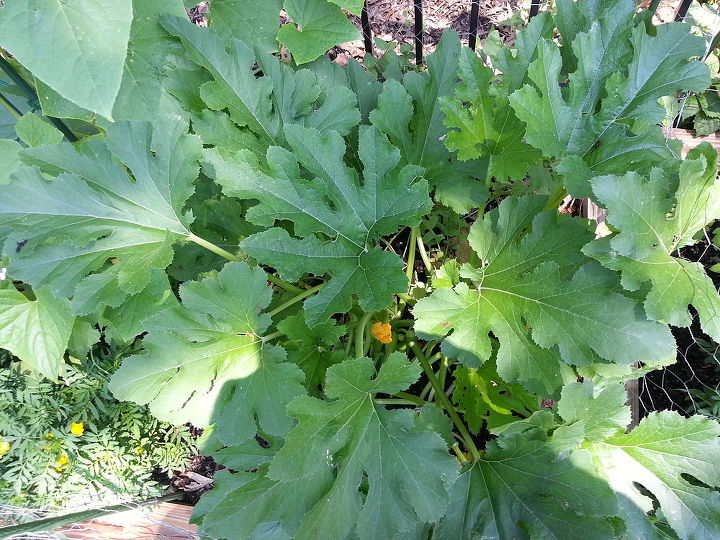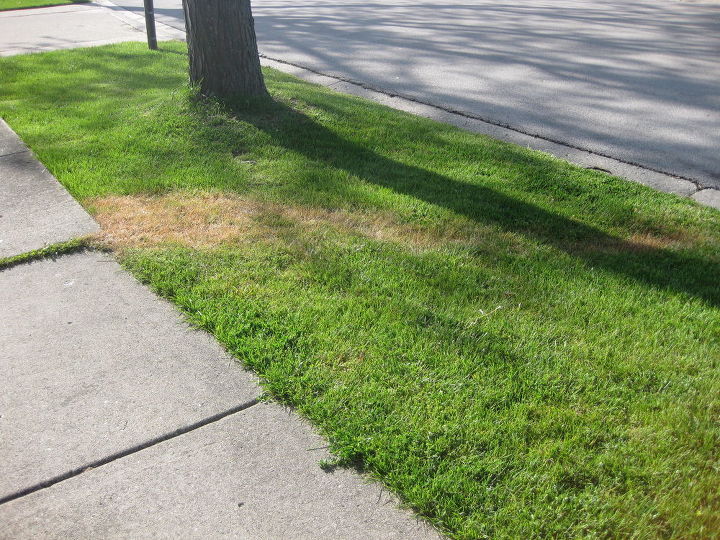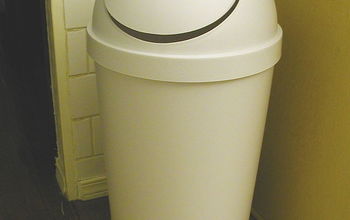My little apple tree loses😕all his apples
Related Discussions
GNATS - How to get rid of them?
Somehow my house and garden got tiny gnats that killed my fuchsia plant and fly everywhere. I have tried ALL the Web recommendations - soap and oil dishes, sand in th... See more
Marigolds growing! Should I pinch the buds?
My marigold plants are growing. I heard that pinching the buds until Autumn will allow them to grow without killing the plant. Is this true?
Growing garlic
Growing our first garlic, should we wait until the leaves are drying out before we pick it? Husband picked first one today along with our first potatoes.
How to keep mice out of your garden?
Hi everyone, I have mice in my garden destroying my vegetables and I have also noticed them in the barn and shed. Please can someone tell me how to prevent them from ... See more
What's the best flower/plant to grow in Texas?
I know that opinions vary, but what's your opinion?!I have great luck w Rosemary plants. Green all year long.
Squash Plants Large and Healthy and no Squash Growing?
2nd Season in a ROW! Squash plants growing large and healthy leaves and the stems near the roots are looking healthy and turning dark green, getting flowers that grow... See more
Trail of dead grass mystery?
Trail of dead grass appeared two weeks ago that starts in neighbor's yard and goes to the sidewalk, then continues past the sidewalk in a line into the grass into my ... See more





The following information comes from the website: http://omeguides.sfgate.com/appletrees-dont-produce-fruit. ; "Lack of pollination" is of special interest!
WHY DON'T MY TREES PRODUCE FRUIT
Apple trees (Malus domestica) are prized primarily for the fruit they produce, so it is often cause for concern when an apple tree fails to bloom well or flowers do not develop into fruit. Numerous factors, ranging from tree age and health to insufficient pollination, can affect blossoming or the amount and quality of fruits that develop on an apple tree.
Tree Age
Apple trees naturally do not begin to flower and produce fruit reliably until they are several years old. Some apples will not bear a significant amount of fruit until they are 5 to 10 years old, although apple trees grown on dwarf rootstocks may flower and fruit after only two or three years. Pruning young trees too heavily or excessive fertilization can further delay fruiting. Even if young trees flower, they generally will not set a large number of fruit.
Excess Vigor
Overly vigorous apple trees will experience an excessive amount of vegetative growth at the expense of flower and fruit production. Overfertilization or heavy pruning are most likely to be responsible for excessive vegetative growth. Apple trees with terminal shoot growth that measures between 12 and 18 inches are considered to have sufficient vigor for fruit production. Terminal shoot growth that exceeds 18 to 20 inches indicates excessive vigor and calls for a reduction in nitrogen fertilizer application or highlights too-heavy pruning.
Alternate Bearing Habit
Many apple trees naturally tend to flower and bear fruit heavily one year and very little the next, a trait referred to as biennial or alternate bearing. A heavy crop one year inhibits flower development the following year. Regular flowering and bearing is potentially achieved by hand-thinning small fruit within two to four weeks of bloom, or spraying trees with a hormone thinning spray shortly after petal drop during the heavily flowering years.
Lack of Pollination
If an apple tree blooms well but fruit fails to develop, insufficient pollination is likely responsible. Most apple varieties are self-unfruitful, with sterile pollen, or partially self-fruitful, with only some viable pollen. So for most apple trees to successfully produce fruit, multiple varieties of apple trees with overlapping periods of bloom must be planted within 100 feet of each other. Bees are primarily responsible for transferring pollen between trees, so disruptions of bee activity -- such as broad-spectrum, persistent pesticide use, rain or wind -- during the bloom period will reduce pollination and limit fruit development.
Improper Care or Site Problems
Apple trees require ample sunlight to bear fruit and will suffer if grown in the shade. Competition for light, moisture and nutrients from other plants grown near the apple can also impact fruiting. Pest infestations, diseases and poor nutrition or insufficient moisture that have an impact on overall tree vigor also negatively affect bearing. Additionally, choosing an apple cultivar well suited to the amount of chilling hours that a site receives is important for blossoming and fruit development.
https://www.gardeningknowhow.com/edible/fruits/apples/no-fruit-on-apple-trees.htm